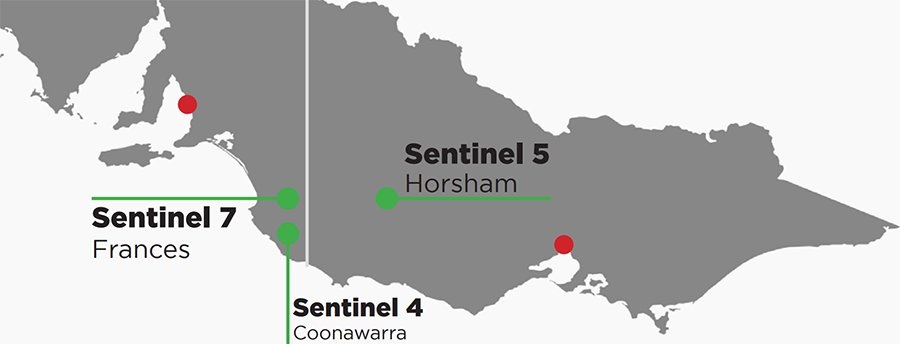A new series of trials of the airborne pest and disease monitoring system, iMapPESTS, is under way at two sites in the southern cropping region.
The trials are located at Frances in South Australia’s South-East and Horsham in Victoria’s Wimmera region.
iMapPESTS is a cross-industry project with GRDC support focused on the development of mobile surveillance units, known as sentinels, coupled with modern diagnostics technology for the identification and quantification of high priority pests and diseases for reporting to industry stakeholders.
Project coordinator for iMapPESTS, Shakira Johnson, says of particular interest to the grains industry is the sentinels’ ability to monitor for the presence and prevalence of key cereal and pulse crop pathogens and insect pests.
“These include the causal agent of Septoria tritici blotch (Zymoseptoria tritici) and Russian wheat aphid (Diuraphis noxia),” she says.
The sentinels deployed in trials across the Wimmera incorporate several air samplers – including insect suction traps – and a fungal spore sampler. Sample collection pots are barcoded and automatically changed daily without the need for human intervention.
Ms Johnson says each sentinel features an onboard weather station, can be controlled remotely by the operators and is able to be packed up and moved with minimal effort.

Sentinel 5 has begun a trial at Grains Innovation Park’s SmartFarm in Horsham, Victoria, and Sentinel 7 has begun sampling at a property in Frances, South Australia.
Insect samples from both trials are being analysed morphologically for a variety of aphid species, including green peach aphid, corn aphid, and Russian wheat aphid.
The samples from the Horsham trial will be further analysed by Agriculture Victoria Research at AgriBio, using a new high-throughput sequencing (HTS) approach with use of the morphological information as references for the genetic data.
The HTS approach enables reporting on a wider range of insects captured, including targets of biosecurity concern, endemic pest species and beneficial insects.
This is achieved by taking a sample of insects captured in the trap and sucking out the genetic code, resulting in a ‘DNA soup’ that is then cross-referenced against a database of known DNA codes for hundreds of thousands of insect species.
The HTS technique – coupled with the versatility and mobility of the iMapPESTS sentinels – could soon form the basis of an improved biosecurity monitoring system for the grains industry.
More information: about iMapPESTS and how to get involved or find your nearest trial. Contact project coordinator, Shakira Johnson, shakira.johnson@ausveg.com.au, 0433 937 564.
iMapPESTS is supported by Horticulture Innovation Australia Limited – through funding from the Australia Government Department of Agriculture, Water and the Environment as part of its Rural R&D for Profit Program – as well as:
- GRDC
- Sugar Research Australia
- Cotton Research and Development Corporation
- Wine Australia
- AgriFutures Australia
- Forest and Wood Products Australia.























































